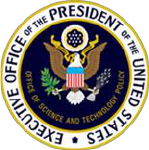
EXECUTIVE OFFICE OF THE PRESIDENT
OFFICE OF SCIENCE AND TECHNOLOGY POLICY
WASHINGTON, D. C. 20503
February 2024
In response to the CHIPS and Science Act of 2022, the White House Office of Science and
Technology Policy (OSTP) established the National Science and Technology Council (NSTC)
Interagency Working Group on Safe and Inclusive STEM Environments (IWG-SISE) with the
responsibility to ‘coordinate Federal research agency efforts to reduce the prevalence of sex-
based and sexual harassment involving award personnel.’ Pursuant to the legislation, IWG-SISE
produced an inventory of policies, procedures, and resources related to preventing and
responding to sex-based and sexual harassment.
Please find the inventory below. It includes the following sections:
• Appendix 1: Introduction to the inventory and definitions of policy categories
• Appendix 2: Table categorizing agency policies, with links to publicly available documents
• Appendix 3: Public agency policy documents that are not available online
• Appendix 4: Full hyperlinks for all policies provided in Appendix 2
Appendix 1. Inventory of Policies, Procedures, and Resources Related to
Preventing and Responding to Sex-Based and Sexual Harassment
The table below lists the policies, procedures, and resources dedicated to preventing
and responding to reports of sex-based and sexual harassment across federal research
agencies (Appendix 2). The table references documents for extramural awardees. While all
agencies have internal policies regarding sex-based and sexual harassment among employees,
this inventory focuses exclusively on agency policies that explicitly reference extramural
awardees. In addition, while Title IX prohibits sex-based discrimination in any educational
program funded by the federal government, Title IX policies and documents from agencies are
not included in the inventory; the inventory catalogues only existing agency-specific policies
and activities that apply to extramural research award personnel. All documents are provided
in the table as links, “Appendix 2 – Federal Agency Sexual Harassment Policy Inventory.”
Appendix 3 denote documents that are public but not available online. In addition, Appendix 4
provides a list of all document names and their associated hyperlinks.
For the purposes of the inventory, general categories were created to group various
documents and policies from federal agencies. Some documents include information across
multiple categories. The shaded cells indicate that the information provided by the agencies
did not explicitly cover this topic. The “Who does this apply to?” column refers to the
extramural researchers and individuals identified in the relevant policies who are not
agency employees, contractors, or applicants. The “Totals” row refers to the number
of total documents identified within each category. The inventory features documents
across nine categories:
1. The Definition of Harassment category includes documents that explicitly defined the
term “harassment.” Official harassment policies often include this definition. Some
definitions extended beyond defining “harassment” broadly, including definitions of
sexual harassment, inappropriate conduct, and other related terms.
2. Standards of Behavior includes any document or policy establishing explicit standards
of professional behavior. This can include codes of conduct and/or other written
policies, and implementing plans to enforce them.
3. Official Harassment Policies are policy documents establishing the agency’s official
and legal standards for protecting employees against harassment. In some cases, these
policies are codified in law. These official policies are legally binding and lay the
foundation for an employee to report harassment and the agency’s response to
harassment allegations. In many cases, an agency’s official harassment policy covers
multiple categories. For example, an official harassment policy could include the
definition of harassment, steps for how to report, and information regarding report
response.
4. The Harassment Prevention category includes documents pertaining to official efforts
to prevent harassment. This can include toolkits, memos, or clauses within harassment
policies focused specifically on preventing workplace harassment.
5. How to Report includes any documents outlining the existing internal processes within
an agency through which harassment may be reported. Documents in this category
include actionable and specific information on reporting allegations of harassment,
including who within agencies can hear and respond to allegations.
6. The Report Response category includes any documents pertaining to how an agency
deals with and responds to reports of harassment. The “report response” goes hand in
hand with the “how to report” category, and they are often included within the same
documents. The key difference is that “how to report” deals with the initial stage of an
employee’s ability to file an allegation, while “report response” covers the agency’s
approach to dealing with the employee’s allegation.
7. Training includes any documents or training programs related to harassment
prevention. This includes mandatory trainings as well as optional trainings.
8. Fact Sheets includes any brochures, fact sheets, or summary documents that outline
the agency’s current efforts and goals in harassment prevention. These fact sheets vary
in length, but serve the purpose of providing a summary of the agency’s harassment
prevention actions and efforts.
9. Initiatives, Other is a miscellaneous category that could include any documents that
don’t fall into the previous categories. One example is documents explaining new
public-facing initiatives within agencies relating to harassment prevention.
Agency Abbreviations
DHS: Department of Homeland Security
DOC: Department of Commerce
DOD: Department of Defense
DOE: Department of Energy
DOI: Department of the Interior
DOJ: Department of Justice
DOT: Department of Transportation
ED: Department of Education
EPA: Environmental Protection Agency
HHS: Department of Health and Human Services
NASA: National Aeronautics and Space Administration
NIH: National Institutes of Health
NIST: National Institute of Standards and Technology
NOAA: National Oceanic and Atmospheric Administration
NRC: Nuclear Regulatory Commission
NSF: National Science Foundation
SI: Smithsonian Institution
State: Department of State
USAID: United States Agency for International Development
USDA: United States Department of Agriculture
USGS: U.S. Geological Survey
USPTO: United States Patent and Trademark Office
VA: Department of Veterans Affairs

Appendix 2. Summary of Policies, Procedures, and Resources for Preventing and Responding to Sex-Based and Sexual Harassment: Extramural Award
Personnel
Gray shaded cells indicate that the documents provided by the agencies did not explicitly cover this topic. In the event the links in this table do not work, refer to Appendix 4.
Agency
Definition of
Harassment
Standards
of Behavior
Official
Harassment
Policies
Harassment
Prevention
How to Report
Report
Response
Training Fact Sheets
Initiatives, Other
Who does this
apply to?
DHS
DOD
DOE
DOE Policies
Prohibiting
Discrimination &
Harassment
(n.d.)
DOE Policies
Prohibiting
Discrimination
& Harassment
(n.d.)
DOE Policies
Prohibiting
Discrimination &
Harassment (n.d.)
Frequently
Asked
Questions
(FAQS):
External Civil
Rights
Compliance
(2022)
DOE Policies Prohibiting
Discrimination &
Harassment (n.d.)
Guidance and Technical
Assistance for Recipients of
and Applicants for DOE
Financial Assistance (n.d.)
Conference Proposals (2023)
SC Statement of
Commitment (2022)
Potential Consequences of
Inappropriate Behavior at
SC-Hosted
Events (n.d.)
Award
personnel, staff
personnel,
students and
postdocs,
participants in
Office of Science-
sponsored
events,
applicants and
recipients of DOE
financial
assistance
DOI
Personnel
Bulletin 18-01
(2018)*
Personnel
Bulletin 18-
01 (2018)*
Personnel Bulletin
18-01 (2018)*
Personnel
Bulletin 18-01
(2018)*
DOJ
Award
Condition:
Policy for
response to
workplace-
related incidents
of sexual
misconduct,
domestic
violence, and
dating violence
(2020)
Award Condition: Policy for
response to workplace-
related incidents of sexual
misconduct, domestic
violence, and dating
violence (2020)
Grant recipients
and
subrecipients
DOT
External Civil
Rights
Complaint
Processing
Manual (2007)
Federal financial
assistance
recipients
ED
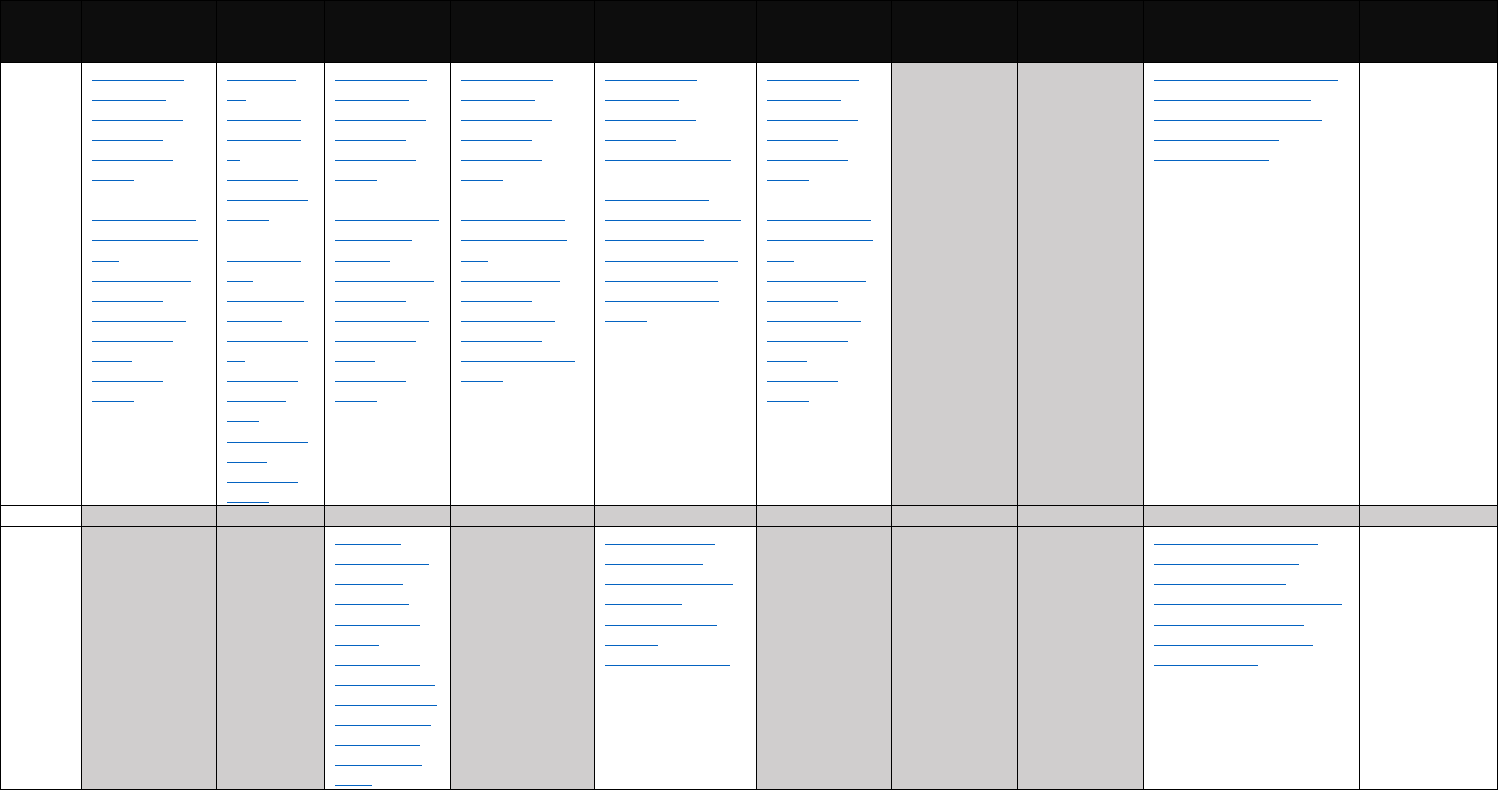
Agency
Definition of
Harassment
Standards
of Behavior
Official
Harassment
Policies
Harassment
Prevention
How to Report
Report
Response
Training Fact Sheets
Initiatives, Other
Who does this
apply to?
EPA
Procedure for
Addressing
Allegations of
Workplace
Harassment
(2015)
Message to EPA
Employees: The
U.S.
Environmental
Protection
Agency’s Anti-
Harassment
Policy
Statement
(2023)
Procedure
for
Addressing
Allegations
of
Workplace
Harassment
(2015)
Message to
EPA
Employees:
The U.S.
Environmen
tal
Protection
Agency’s
Anti-
Harassment
Policy
Statement
(2023)
Procedure for
Addressing
Allegations of
Workplace
Harassment
(2015)
Message to EPA
Employees:
The U.S.
Environmental
Protection
Agency’s Anti-
Harassment
Policy
Statement
(2023)
Procedure for
Addressing
Allegations of
Workplace
Harassment
(2015)
Message to EPA
Employees: The
U.S.
Environmental
Protection
Agency’s Anti-
Harassment
Policy Statement
(2023)
Procedure for
Addressing
Allegations of
Workplace
Harassment (2015)
Message to EPA
Employees: The U.S.
Environmental
Protection Agency’s
Anti-Harassment
Policy Statement
(2023)
Procedure for
Addressing
Allegations of
Workplace
Harassment
(2015)
Message to EPA
Employees: The
U.S.
Environmental
Protection
Agency’s Anti-
Harassment
Policy
Statement
(2023)
Message to EPA Employees:
The U.S. Environmental
Protection Agency’s Anti-
Harassment Policy
Statement (2023)
Grantee
employees
HHS
NASA
Reporting
Requirements
Regarding
Findings of
Harassment,
Sexual
Harassment,
Other Forms of
Harassment, or
Sexual Assault
(85 Fed. Reg.
47, March 10,
2020)
Harassment and
Discrimination
Reporting for NASA
Employees,
Contractors, and
Grantee
Beneficiaries (n.d.)
Reporting Requirements
Regarding Findings of
Harassment, Sexual
Harassment, Other Forms of
Harassment, or Sexual
Assault (85 Fed. Reg. 47,
March 10, 2020)
Award
personnel, PIs,
students and
postdocs; all
grantee
employees and
beneficiaries

NIH
(HHS)
Definitions
(2021)
8.1.2 Prior
Approval
Requirements
(2022)
14.6 Public
Policy
Requirements
and Objectives
(2022)
8.3
Management
Systems and
Procedures
(2023)
Expectations,
Policies, and
Requirements
(2022)
NIH Process for
Handling Allegations
of Harassment on an
NIH-Funded Project
at a Recipient
Institution (2023)
Institutional
Reporting (2022)
Find Help (2019)
NIH Process for
Handling
Allegations of
Harassment on
an NIH-Funded
Project at a
Recipient
Institution
(2023)
Institutional
Reporting (2022)
What to Expect
When Notifying
NIH (n.d.)
Addressing
Sexual
Harassment in
Biomedical
Science (2020)
Expectations, Policies, and
Requirements (2022)
8.3 Management Systems
and Procedures (2023)
Updated Requirements for
NIH Notification of Removal
or Disciplinary Action
Involving Program
Directors/Principal
Investigators or other
Senior/Key Personnel (2022)
Plans to Promote Safe
Environments at
Conferences Supported by
NIH Grants and Cooperative
Agreements (2022)
NIH Actions and Oversight
(2022)
Guidance Regarding Change
in Status, Including Absence
of PD/PI and Other Key
Personnel Named in the
Notice of Award (2020)
Data - Harassment and
Discrimination Concerns
(2023)
Workplace Climate and
Harassment Survey (WCHS)
(2019)
Changing the culture of
science to end sexual
harassment (2018)
Congress strengthens NIH’s
ability to address
harassment in NIH-funded
activities (2022)
Frequently Asked Questions
(FAQs) (n.d.)
Ensuring Safe and Respectful
Workplaces Podcast (2023)
Supporting a Safe and
Respectful Workplace at
Institutions that Receive NIH
Funding (2021)
PIs, key
personnel,
applicants for
funding from
conferences; NIH
award recipient
community
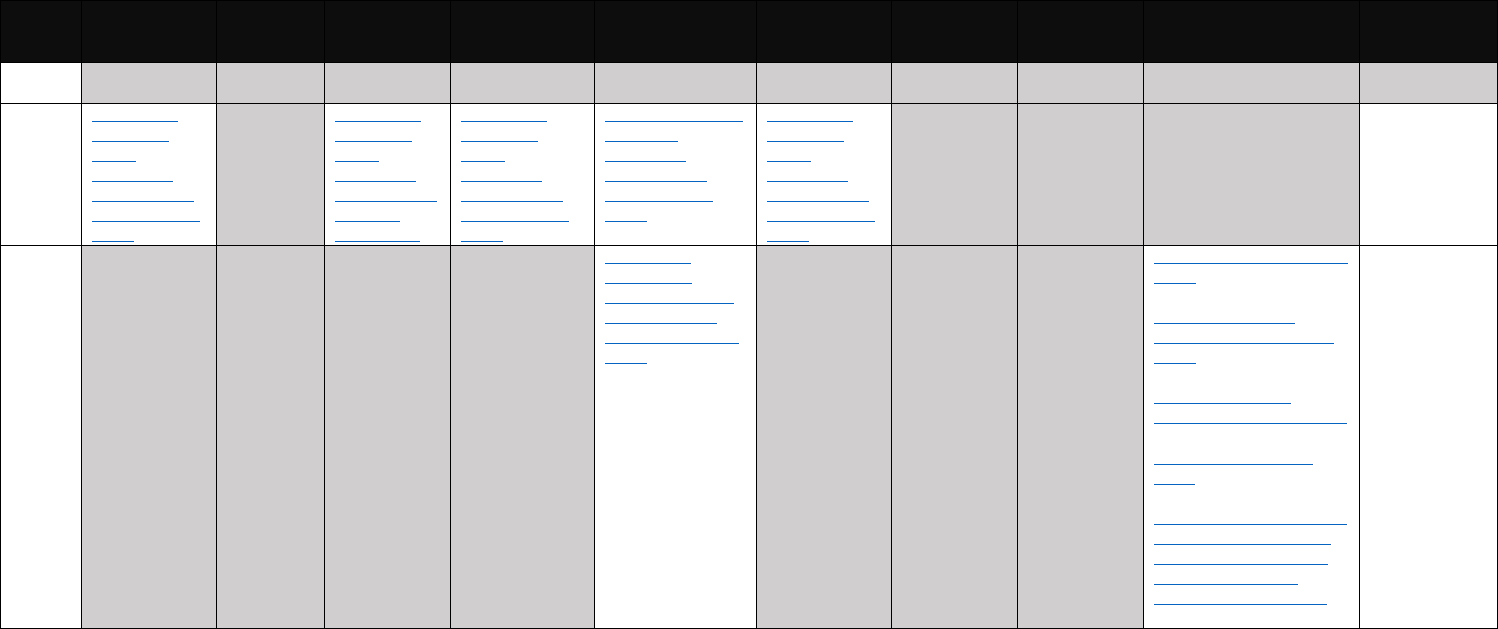
Agency
Definition of
Harassment
Standards
of Behavior
Official
Harassment
Policies
Harassment
Prevention
How to Report
Report
Response
Training Fact Sheets
Initiatives, Other
Who does this
apply to?
NIST
(DOC)
NOAA
(DOC)
NOAA Sexual
Assault and
Sexual
Harassment
Prevention and
Response Policy
(2018)
NOAA Sexual
Assault and
Sexual
Harassment
Prevention and
Response
Policy (2018)
NOAA Sexual
Assault and
Sexual
Harassment
Prevention and
Response Policy
(2018)
NOAA Sexual Assault
and Sexual
Harassment
Prevention and
Response Policy
(2018)
NOAA Sexual
Assault and
Sexual
Harassment
Prevention and
Response Policy
(2018)
PIs, staff
personnel,
students and
postdocs,
affiliates
NRC
How to File a
Complaint of
Discrimination by a
Recipient of NRC
Financial Assistance
(2023)
External Civil Rights Program
(2023)
Nondiscrimination in
Federally Funded Activities
(2023)
Pre- and Post-Award
Compliance Programs (2023)
NRC Standard Form 781
(2022)
6. Information on Civil Rights
Compliance Requirements
Imposed as a Condition of
Award of NRC Federal
Financial Assistance (n.d.)
Applicants and
recipients of NRC
Federal Financial
Assistance,
including
institutions of
higher
education,
nonprofit
organizations,
and private
corporations
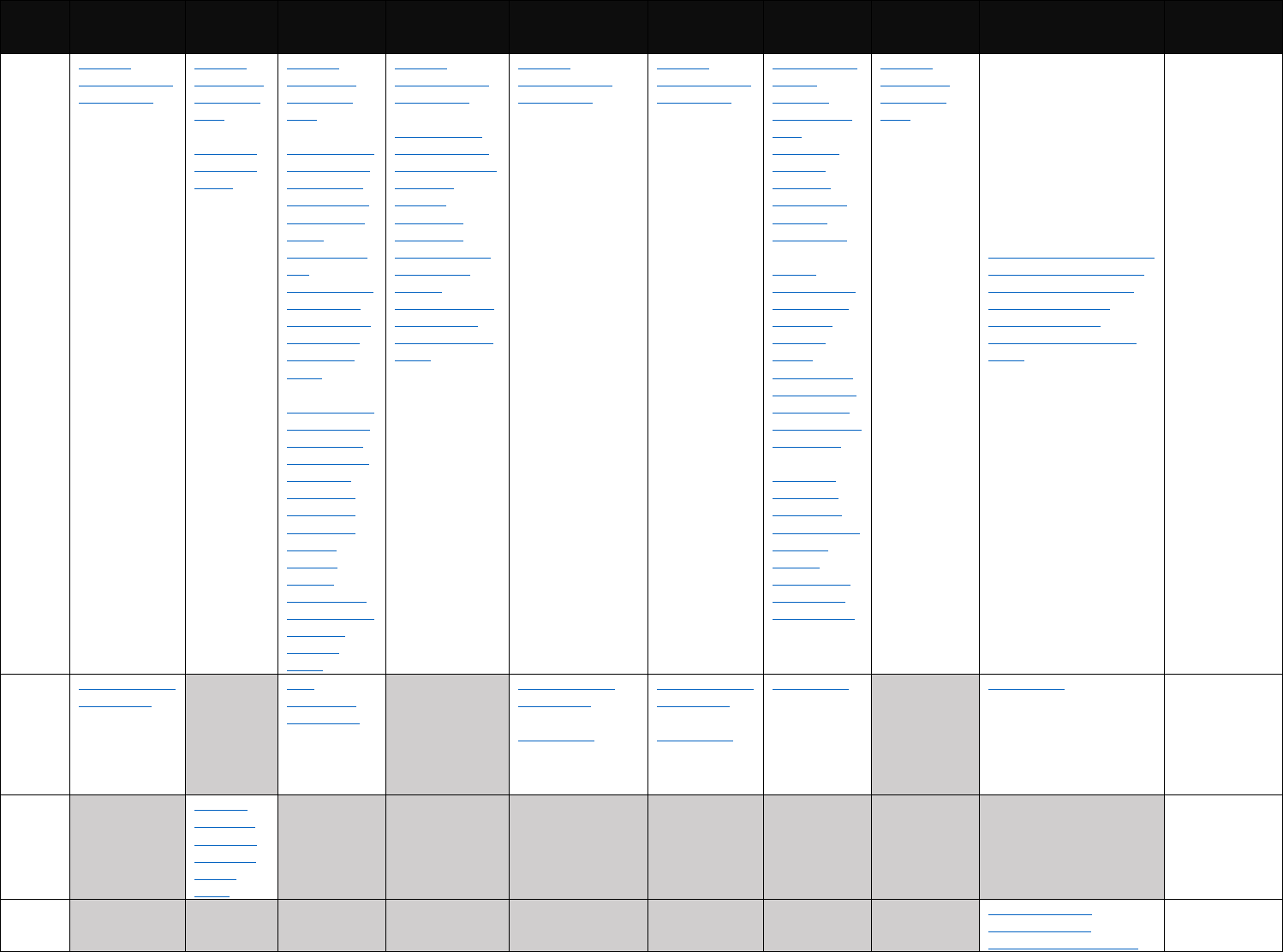
Agency
Definition of
Harassment
Standards
of Behavior
Official
Harassment
Policies
Harassment
Prevention
How to Report
Report
Response
Training Fact Sheets
Initiatives, Other
Who does this
apply to?
NSF
Stopping
Harassment and
Assault (n.d.)
Stopping
Harassment
and Assault
(n.d.)
Polar Code
of Conduct
(2023) †
Stopping
Harassment
and Assault
(n.d.)
NSF Proposal &
Award Policies
& Procedures
Guide Chapter
XI: Other Post
Award
Requirements
and
Considerations
(Part A) Non-
Discrimination
Statutes and
Regulations
(2023)
NSF Proposal &
Award Policies
& Procedures
Guide Chapter
II: Proposal
Preparation
Instructions
(Section E9)
Safe and
Inclusive
Working
Environments
for Off-Campus
or Off-Site
Research
(2023)
Stopping
Harassment and
Assault (n.d.)
NSF Proposal &
Award Policies &
Procedures Guide
Chapter II:
Proposal
Preparation
Instructions
(Section E9) Safe
and Inclusive
Working
Environments for
Off-Campus or
Off-Site Research
(2023)
Stopping
Harassment and
Assault (n.d.)
Stopping
Harassment and
Assault (n.d.)
TH15I - Making
Remote
Fieldwork
Environments
More
Welcoming,
Safe, and
Equitable:
Progress and
Needs for
Action (2023)
ED51A -
Successes and
Challenges in
Advancing
Diversity,
Equity,
Inclusion, and
Accessibility in
the Polar and
Alpine Sciences
I Oral (2023)
NSF Sexual
Assault and
Harassment
Prevention and
Response
(SAHPR)
Overview and
Engagement
Session (2023)
Stopping
Harassment
and Assault
(n.d.)
Sexual Harassment, Other
Forms of Harassment, and
Sexual Assault Certification
(2023) (Not available online,
provided in Appendix 3. This
form is signed by external
organizations which send
representatives to NSF
under an Intergovernmental
Personnel Act assignment.)
National Study Supported by
NSF: Sexual Harassment of
Women: Climate, Culture
and Consequences in
Academic Sciences,
Engineering and Medicine
(2018)
Grantee
institutions,
principal
investigators and
all individuals
affiliated with a
grant award
SI
Anti-Harassment
Policy (2020)
Anti-
Harassment
Policy (2020)
Anti-Harassment
Policy (2020)
SI Civil (2023)
Anti-Harassment
Policy (2020)
SI Civil (2023)
SI Civil (2023)
SI Civil (2023)
Affiliated
persons,
including visiting
researchers
(scientists,
scholars, and
students)
State
Standard
Terms and
Conditions
for Federal
Awards
(2020) ‡
Grantees
USAID
Action Alliance for
Preventing Sexual
Misconduct (AAPSM) (n.d.)
Grantees,
implementing
partners
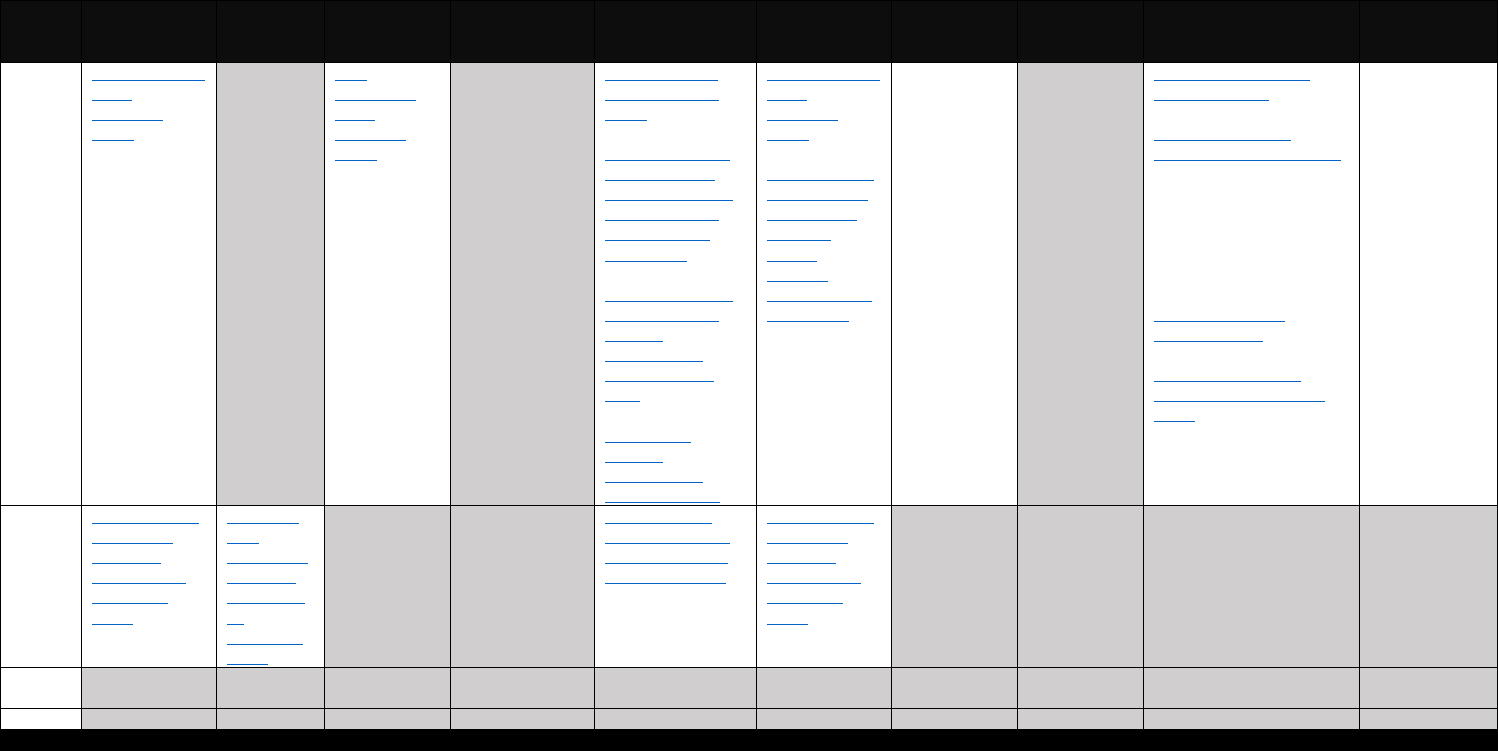
Agency
Definition of
Harassment
Standards
of Behavior
Official
Harassment
Policies
Harassment
Prevention
How to Report
Report
Response
Training Fact Sheets
Initiatives, Other
Who does this
apply to?
USDA
Anti-Harassment
Policy
Statement
(2021)
Anti-
Harassment
Policy
Statement
(2021)
Anti-Harassment
Policy Statement
(2021)
Nondiscrimination
in Programs and
Activities Receiving
Federal Financial
Assistance from
USDA (2021)
U.S. Department of
Agriculture USDA
Program
Discrimination
Complaint Form
(n.d.)
How to File a
Program
Discrimination
Complaint (2023)
Anti-Harassment
Policy
Statement
(2021)
Nondiscriminati
on in Programs
and Activities
Receiving
Federal
Financial
Assistance from
USDA (2021)
Ensuring
Compliance
with your
Partners
Participant
Guide (2023)
(not available
online,
provided in
Appendix 3)
Anti-Harassment Policy
Statement (2021)
Establishing an Anti-
Harassment Program (2023)
USDA Equal Employment
Opportunity Policy
Statement (2023) (not
available online, provided in
Appendix 3)
Non-Discrimination
Statement (n.d.)
How to File a Program
Discrimination Complaint
(2023)
Award
personnel, PIs,
fellows, trainees,
interns,
volunteers,
programs and
activities
receiving federal
financial
assistance,
applicants for
federal financial
assistance
USGS
(DOI)
370.734.1 - Anti-
Harassment
Policy and
Implementing
Procedures
(2020) *
370.734.1 -
Anti-
Harassment
Policy and
Implementi
ng
Procedures
(2020) *
370.734.1 - Anti-
Harassment Policy
and Implementing
Procedures (2020) *
370.734.1 - Anti-
Harassment
Policy and
Implementing
Procedures
(2020) *
USPTO
(DOC)
VA
TOTALS
11
7
14
5
18
14
6
2
35
† Indicates that the referenced information only applies to grantees participating in NSF Arctic or Antarctic research activities.
‡ The Department of State’s “Standard Terms and Conditions for Federal Awards” does not explicitly reference harassment but includes language requiring award
recipients to submit information that is in connection with the award and involves a criminal, civil, or administrative proceeding that could or did result in
conviction, finding of fault and liability, and payment of monetary fine or penalty.
* USGS is actively working on changing the language of these documents to clarify that the antiharassment policy applies to DOI and USGS Employees and Affiliates
— a group that includes grantees, contractors, volunteers, and visitors — not only for harassment against them, but also for harassment by them.

Appendix 3.
IWG-SISE received permission from the National Science Foundation Office of General Counsel and Division of Human Resource
Management to include the below document in the inventory.
SEXUAL HARASSMENT, OTHER FORMS OF HARASSMENT, AND SEXUAL ASSAULT CERTIFICATION
A.
Certification of Approving Official
By signing below, I certify that the institution has not taken an administrative action nor made a finding or determination of sexual
harassment, other forms of harassment, or sexual assault with regard to the assignee. If during the period of this Intergovernmental
Personnel Act Assignment Agreement, the institution takes an administrative action or makes a finding or determination relating to
sexual harassment, other forms of harassment, or sexual assault with regard to the assignee, I further certify that the institution will
notify the National Science Foundation Authorizing Officer immediately, that is, within two business days of the administrative action,
finding or determination.
B.
Certification of Assignee
The safety and security of NSF personnel and those individuals who participate in NSF supported engagements and activities is of the
utmost priority to the Foundation. By signing below, I certify that I have informed NSF of any finding or determination of sexual
harassment, other form of harassment, or sexual assault made by any institution or professional organization regarding my actions in
sufficient detail for it to assess whether this assignment is consistent with the safety and security of its personnel, stakeholders, and
award participants.
For purposes of the certifications in A and B, the following definitions apply:
Sexual harassment: may include but is not limited to gender or sex-based harassment, unwelcome sexual attention, sexual coercion, or
creating a hostile environment, as set forth in organizational/institutional policies or codes of conduct, statutes, regulations, or executive
orders.
Other forms of harassment: non-gender or non-sex-based harassment of individuals protected under federal civil rights laws, as set forth
in organizational/institutional policies or codes of conduct, statutes, regulations, or executive orders.
Administrative Action: any temporary/interim suspension or permanent removal of the individual, or any administrative action imposed
on the individual by the institution under organizational/institutional policies or codes of conduct, statutes, regulations, or executive
orders, relating to activities, including but not limited to the following: teaching, advising, mentoring, research, management or
administrative duties, or presence on campus.
Finding or Determination: the final disposition of a matter involving sexual or other form of harassment under institutional/organizational
policies and processes, to include the exhaustion of permissible appeals exercised by the individual, or a conviction of a sexual offense in
a criminal court of law.
Certification Official Printed Name and Signature Date
IPA Printed Name and Signature

The inclusion of these documents has been reviewed and approved by USDA-NIFA.
Office of the Secretary Washington, DC
20250
July 25, 2023
USDA Equal Employment Opportunity Policy Statement
At the U.S. Department of Agriculture (USDA), we are recommitting ourselves to the values of diversity, equity, inclusion,
accessibility, and equal opportunity for each other and those we serve. As Secretary, I am committed to working with leaders at
all levels across the Department to intentionally build and advance a culture of belonging and excellence across USDA. It is USDA’s
mission to actively advance racial justice and equity for one another by rooting out systemic discrimination and inequities and
strengthening civil rights programs while building trust within and outside the Department. This commitment is reflected in
USDA’s Strategic Plan 2022-2026, USDA’s Equity Action Plan, and the USDA’s Diversity, Equity, Inclusion and Access Strategic Plan
for Fiscal Year 2022-2026.
As a Department, our core values of respect and dignity, equity and inclusion, trust and integrity, service and results, and science
leadership serve as guiding principles, defining appropriate behaviors and expectations for all employees, and directing decision
making throughout all levels of the organization.
No employee, former employee, or applicant for employment at the Department will be denied equal opportunity because of race,
color, sex, national origin, religion, age, disability, pregnancy, sexual orientation, gender identity, genetic information, retaliation,
or any other non-merit-based factor. This not only is the law; it is an essential component of the Department’s mission and our
responsibility to the public we serve.
All employees have the freedom to compete on a fair and level playing field with equal opportunity for available employment,
advancement opportunities, and compensation. Equal employment opportunity covers all personnel/employment programs,
management practices, and decisions, including recruitment, hiring, merit promotion, transfer, reassignments, training and
career development, benefits, and separation. These civil rights principles are more than employees’ rights by law—they are core
values at USDA.
USDA strives to become a leader in equal employment opportunity (EEO) and a model employer. All USDA applicants and
employees have the right not only to be free from harassment and discrimination but also to raise an allegation of harassment or
discrimination and not fear reprisal. Any form of workplace harassment or reprisal against anyone who engages in protected
activity will not be tolerated. USDA’s recently issued Anti-Harassment Program Departmental Regulation 4200-003, reenforces
that Agencies are required to respond to, address, and correct any harassing conduct before it becomes severe or pervasive, and
USDA will continue to process complaints of harassment, discrimination, and reprisal and provide robust EEO training to all
employees.
Employees and managers will be held accountable for doing their part to ensure all USDA applicants, customers, constituents,
and stakeholders are provided equal access to all opportunities, programs, and services available through USDA. Accordingly, all
senior leaders, managers, and supervisors must act in a manner that is deserving of the public’s trust and with the utmost integrity
in everything we do as public servants, leading always by example, treating everyone with dignity and respect, and promoting an
ethical, equitable, and inclusive culture. All employees must comply with EEO principles as we perform the Department’s mission.
Sincerely,
T
HOMAS J. VILSACK
Secretary
An Equal Opportunity Employer
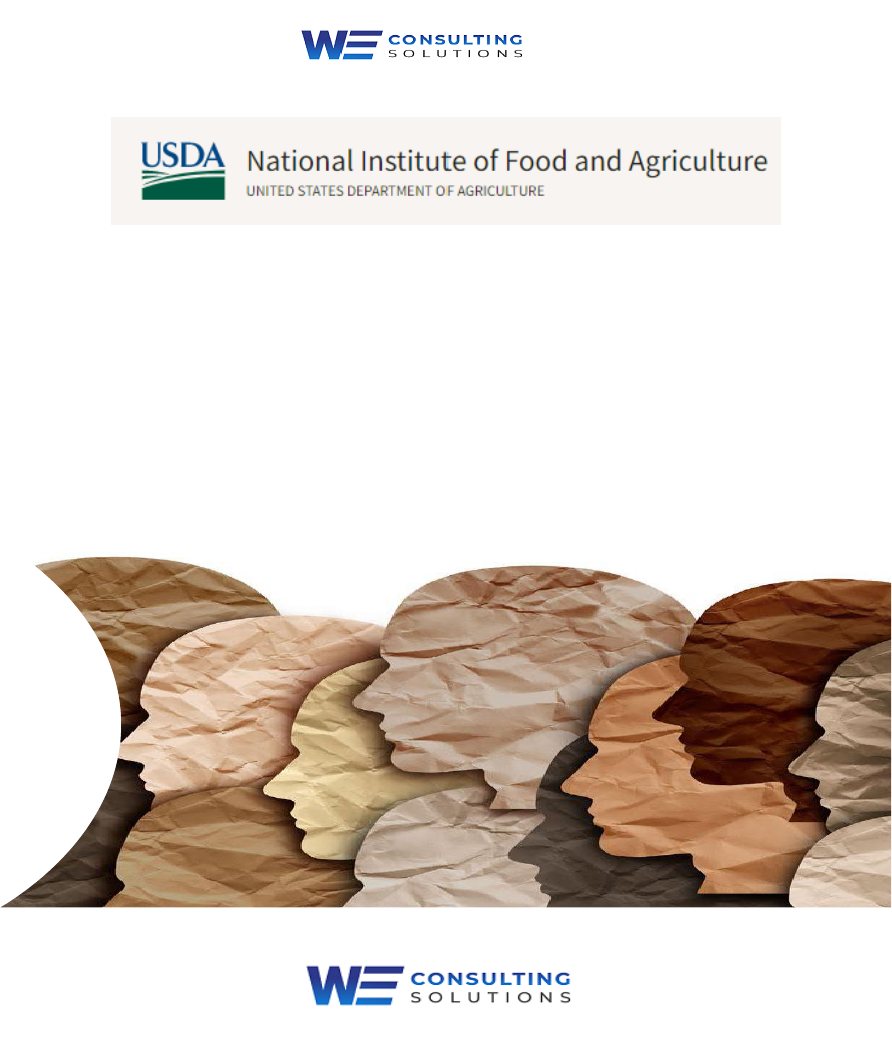
Parcipant Guide Compliance Training
www.WEConsulngSoluons.com Empowering a Greater YOU! ©WE, LLC Consulng Soluons
1 | P a g e
USDA: NATIONAL INSTITUTE OF FOOD AND
AGRICULTURE (NIFA)
Ensuring Compliance with your Partners
Participant Guide
Human Resources Compliance Training
May 16, 2023
©2023 WE, LLC Consulting Solutions
Printed in the United States of America
Copying of Materials Expressly Prohibited
All rights reserved. No part of this document may be reproduced, stored in a retrieval system, or transmitted, in any
form or by any means, including electronic, mechanical, photographic, or magnetic. To obtain permission, contact
Wanda L. Scott, 4601 Fairfax Dr. Ste. 1200 Arlington, VA 22203
Attention: Instructional Design. This workbook is not for sale or resale except by Wanda L. Scott.
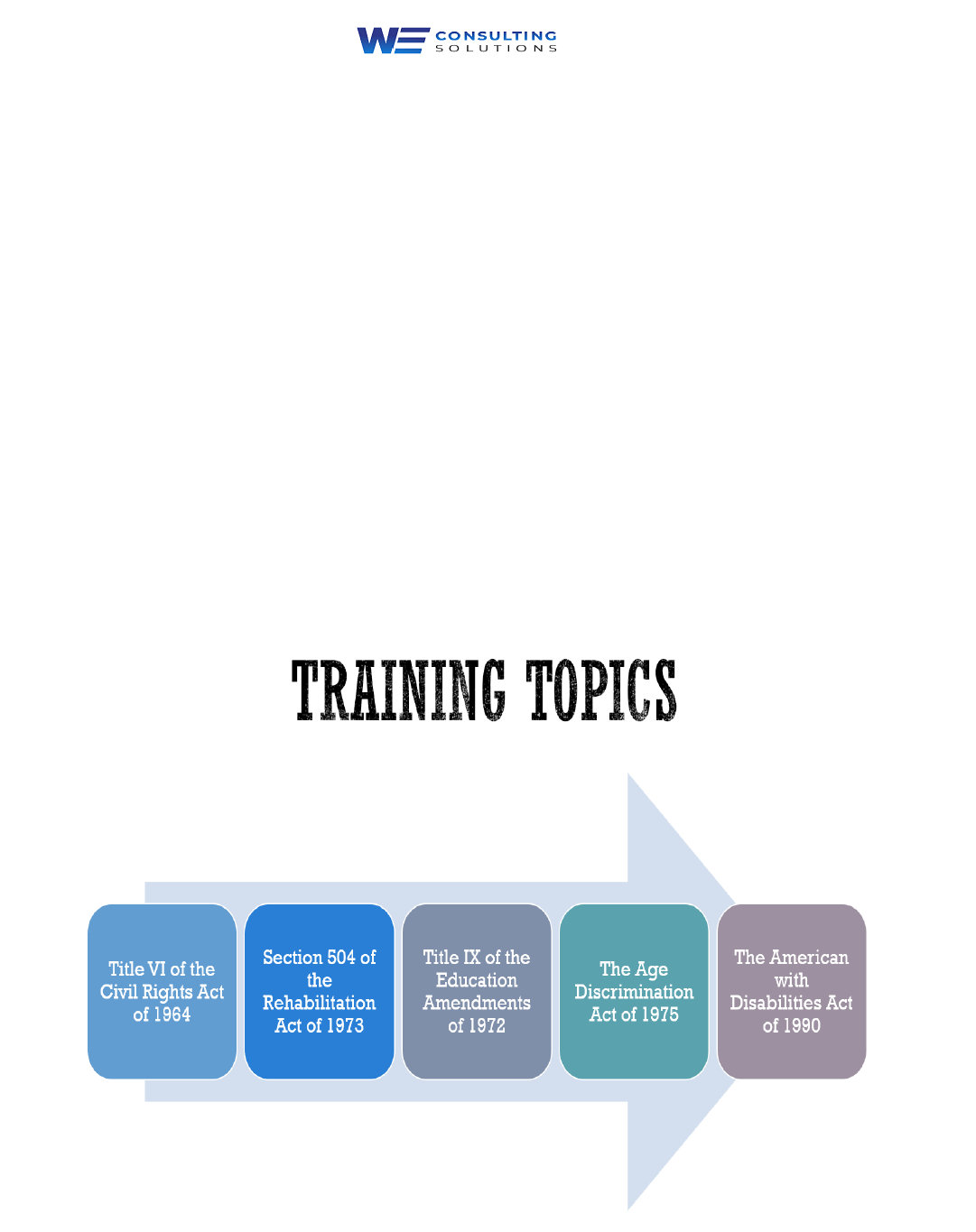
Parcipant Guide Compliance Training
www.WEConsulngSoluons.com Empowering a Greater YOU! ©WE, LLC Consulng Soluons
2 | P a g e
Course Objecves
To protect the civil rights of service recipients and to ensure equal access to
programs, acvies, and services regardless of race, color, or naonal origin.
To ensure all management sta are aware of the provisions of Title VI of the Civil
Rights Act of 1964, Secon 504 of the Rehabilitaon Act of 1973, Title IX of the
Educaon Amendments of 1972, The Age Discriminaon Act of 1975, and The
Americans with Disabilies Act of 1990.
To ensure all management sta are aware of the minimum requirements to be in
compliance with the rules, laws, and regulaons.
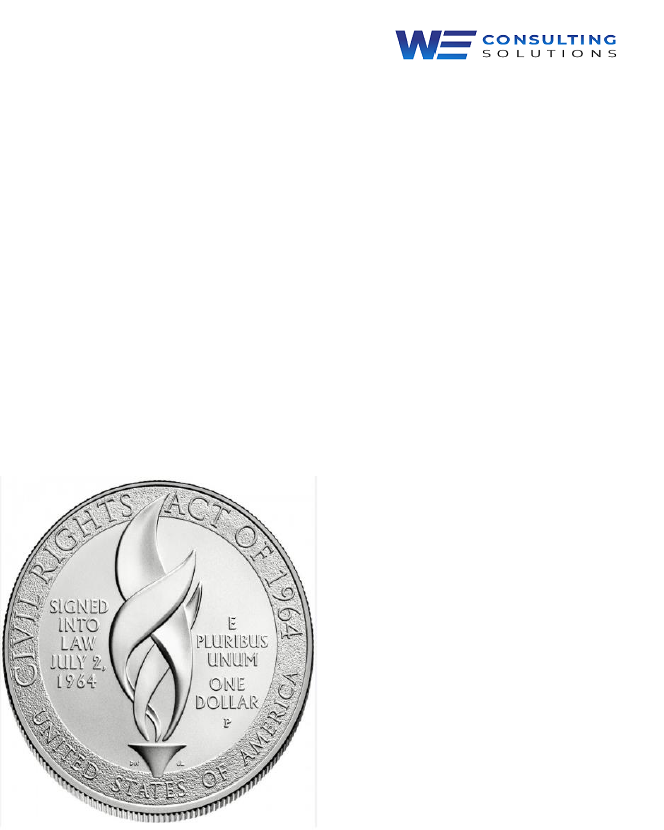
Parcipant Guide Compliance Training
www.WEConsulngSoluons.com Empowering a Greater YOU! ©WE, LLC Consulng Soluons
3 | P a g e
The Age Discriminaon Act of 1975 and The American with Disabilies Act of 1990 have the same acronym.
However, the Acts serve dierent purposes which we will discuss during this training. When referring to the
Acts it is best to include the year of the Act for claricaon.
Review of the Civil Rights Act of 1964
Civil Rights Act of 1964 was created because people of color were being discriminated against even though the
Constuon said everyone was equal.
How we got here:
1954 Brown vs the Board of Educaon (was actually the name given to
ve separate cases that were heard by the U.S. Supreme Court concerning
the issue of segregaon in public schools. These cases were Brown v. Board
of Educaon of Topeka, Briggs v. Elliot, Davis v. Board of Educaon of Prince
Edward County (VA.), Bolling v. Sharpe, and Gebhart v. Ethel. While the facts
of each case are dierent, the main issue in each was the constuonality of
state-sponsored segregaon in public schools. On May 14, 1954, Chief
Jusce Warren gave the opinion of the Court, stang that "We conclude that
in the eld of public educaon the doctrine of 'separate but equal' has no
place. Separate educaonal facilies are inherently unequal. . .")
1955-56 Montgomery Bus Boyco
1957 Lile Rock Arkansas Central High School
1957 Separate public facilies
1959-1963 Lunch Counter Sit-Ins
1961 “Freedom Rides” organized by the Congress of Racial Equality (CORE) to expose illegal
segregaon pracces on Interstate bus or train travel
1962 United Farm Workers Union established to protest working condions and civil rights for
Mexican American (Cesar Chavez)
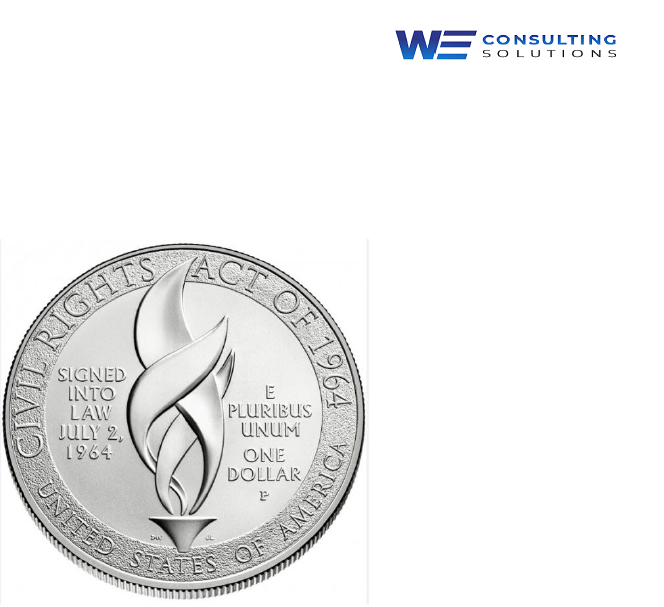
Parcipant Guide Compliance Training
www.WEConsulngSoluons.com Empowering a Greater YOU! ©WE, LLC Consulng Soluons
4 | P a g e
Title VI Of The Civil Rights Act Of 1964
Title VI prohibits intenonal discriminaon. It was signed into law by
President Lyndon Johnson on July 2, 1964, prohibited discriminaon in
public places, provided for the integraon of schools and other public
facilies, and made employment discriminaon illegal. It was the most
sweeping civil rights legislaon since Reconstrucon.
NOTE: Although President Kennedy was assassinated in November
1963 he urged the naon to take acon on June 6, 1963, when he said:
Simple jusce requires that public funds, to which all taxpayers of all
races, colors, and naonal origins contribute, not be spent in any
fashion which encourages, entrenches, subsidizes or results in racial,
color, or naonal origin discriminaon.
What is Title VI
There are 11 Secons also known as Titles of the Civil Rights Act of 1964:
Title I –Barred unequal applicaon of voter requirements but did not abolish literacy tests somemes used to
disqualify voters.
Title II – Outlawed discriminaon in hotels, motels, restaurants, theaters, and all other public accommodaons
engaged in interstate commerce; exempted private clubs without dening “private” thereby allowing a
loophole.
Title III – Encouraged desegregaon of public schools and authorized the US Aorney General to le suits to
force desegregaon but did not authorize busing as a means to overcome segregaon based on residence.
Title IV – Authorized but did not require withdrawal of federal funds from programs which pracced
discriminaons.
Title V- Outlines Civil Rights Commissions dues and responsibilies.
Title VI – Prohibited discriminaon in federally assisted programs.
Title VII – Outlaws discriminaon in employment in any business based on race, naonal origin, gender, or
religion. It also prohibits retaliaon against employees who oppose such unlawful discriminaon.
Title VIII-Authorizes the Secretary of Commerce to compile registraon and vong stascs in geographic
areas as recommended by the Commission of Civil Rights.
Title IX-Intervenon and procedures aer removal in Civil Rights Cases.
Title X- Establishment of Community Relaons Service; and
Title XI – Miscellaneous

Parcipant Guide Compliance Training
www.WEConsulngSoluons.com Empowering a Greater YOU! ©WE, LLC Consulng Soluons
5 | P a g e
Prohibited Acts of Title VI:
1) Denying an individual any service, nancial aid, or other benet.
2) Providing services or benets that are dierent or inferior (either in quanty or quality) to some
individuals than those provided to others.
3) Segregated or separate treatment in any manner related to receiving program services or benets.
4) Requiring dierent standards or condions as prerequisites for serving individuals
5) Locang facilies in areas that would limit or impede access in any way to a service or benet (for
minority groups or otherwise)
Requirements of Title VI:
1) Encourages the parcipaon of minories as members of planning or advisory bodies for programs
receiving federal funds.
2) Requires informaon and services to be provided in languages other than English when signicant
numbers of beneciaries are of limited English-speaking ability.
3) Requires enes to nofy the eligible populaon about applicable programs.
4) Requires assurance of nondiscriminaon in purchasing of services.
Quesons:
1. In what way can this regulaon be violated within the responsibilies of NIFA?
2. In what way has Title VI been violated in the past?

Parcipant Guide Compliance Training
www.WEConsulngSoluons.com Empowering a Greater YOU! ©WE, LLC Consulng Soluons
6 | P a g e
What Must Be Looked At For Compliance?
1. Provision of services
2. Program service delivery
3. Infrastructure development
4. Disparate impact
5. Accountability in public funds expenditures
6. Minority parcipaon in decision-making
7. Economic empowerment
8. Site and locaon of the facilies
9. Environmental jusce
10. Accessibility for all persons
11. Public-private partnerships nanced in part or whole with public funds.
12. Comprehensive method of administraon to assure enforcement/compliance at the state and local
level.
Compliance:
1. Have you observed any compliance violaons by grant recipients?
2. Name two of these that you have examined specically while out in the eld working.

Parcipant Guide Compliance Training
www.WEConsulngSoluons.com Empowering a Greater YOU! ©WE, LLC Consulng Soluons
7 | P a g e
What Does Title VI Compliance Look Like
Ensuring that individuals being served or desiring to be served:
a. Receive equal treatment.
b. Have equal access to the services provided.
c. Equal rights are not being violated.
d. Receive equal opportunies.
NOTE: Violaons can occur when services are intenonally denied or not equally provided
Disparate impact discriminaon (unintenonal discriminaon) occurs when individuals, groups and/or
communies are negavely impacted by policies or procedures i.e., Limited English prociency speakers not
being understood when talking.

Parcipant Guide Compliance Training
www.WEConsulngSoluons.com Empowering a Greater YOU! ©WE, LLC Consulng Soluons
8 | P a g e
Execuve Order 11366: Limited English Prociency (LEP)
Under this order, every federal agency that provides nancial assistance to non-federal enes must
publish guidance on how their recipients can provide meaningful access to LEP persons that will help
them comply with Title VI regulaons forbidding funding recipients from "restricng an individual in
any way in the enjoyment of any advantage or privilege enjoyed by others receiving any service,
nancial aid, or other benet under the program" or from "ulizing criteria or methods of
administraon which have the eect of subjecng individuals to discriminaon because of their race,
color, or naonal origin, or have the eect of defeang or substanally impairing accomplishment of
the objecves of the program as respects individuals of a parcular race, color, or naonal origin."
Reasonable LEP Guidance Steps:
Recipients and sub-recipients of federal funds must take reasonable steps to ensure meaningful access to the
programs and acvies oered. The following can be done:
1. Consider the number of eligible individuals with limited English speaking, reading, wring, and
understanding skills and abilies to be served or likely want the services being oered.
2. Consider the proporon of the people in the community with limited English speaking, reading, wring,
and understanding skills and abilies eligible to be served or likely want the services oered.
3. Determine how frequently LEP people will need the services of the program.
4. Determine the nature and level of importance of the service, program, or acvity provided to people’s
lives; and
5. Determine the resources available to the grantee/recipient or agency, and associated costs.
Discuss: How the factors should be applied in determining the extent to which language access services should
be provided to LEP persons.

Parcipant Guide Compliance Training
www.WEConsulngSoluons.com Empowering a Greater YOU! ©WE, LLC Consulng Soluons
9 | P a g e
How NIFA Can Help With LEP Compliance:
✓ Assist by providing technical assistance.
✓ Provide examples for providing language assistance.
✓ Provide helpful informaon concerning competency of interpreters and translators and
✓ When necessary, translate materials, idenfy safe harbor standards to help ensure
compliance with Title VI.
Recipients of Federal nancial assistance should:
✓ Clarify that where an obligaon exists, recipients must provide competent and mely
language assistance services at no cost to their LEP clients.
✓ Cauon recipients against using a client’s friends or family members, especially children,
as interpreters, unless the recipient has informed their client of the availability of free,
competent and condenal language assistance services and the client sll chooses to
use a family member or friend as an interpreter.
✓ Advise recipients that, where concerns about competence, condenality,
appropriateness or conict of interest are present, interpretaon services may sll have
to be provided in lieu of using friends or family members.
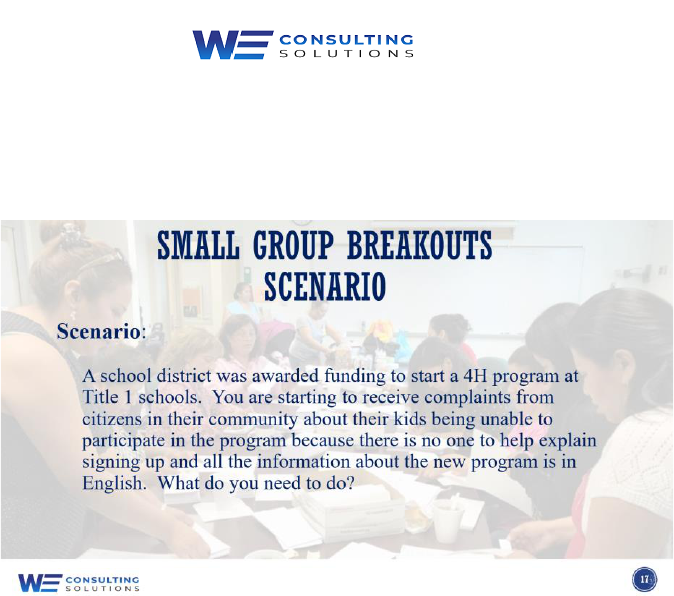
Parcipant Guide Compliance Training
www.WEConsulngSoluons.com Empowering a Greater YOU! ©WE, LLC Consulng Soluons
10 | P a g e
Small Group Breakout Acvity
Scenario:
A school district was awarded funding to start a 4H program at Title 1
schools. You are starting to receive complaints from citizens in the
community about their kids being unable to participate in the program
because there is no one to help explain the signing up and all the
information about the new program is in English. (5 minutes)
1. What do you need to do?

Parcipant Guide Compliance Training
www.WEConsulngSoluons.com Empowering a Greater YOU! ©WE, LLC Consulng Soluons
11 | P a g e
Secon 504 of The Rehabilitaon Act Of 1973
What the Regulaon Says:
No otherwise qualied individual with a disability in the United States, shall, solely by reason
of his/her disability, be excluded from the parcipaon in, be denied the benets of, or be
subjected to discriminaon under any program or acvity receiving Federal nancial
assistance.
Who Is A Qualied Individual?
A. For NIFA, who would be considered a qualied individual?
B. What is an example of how you would qualify an individual? (accommodaon that
would be made)
C. In employment a “qualied individual” is a person who can perform the funcons of the
job in queson with “reasonable accommodaons”
D. In the school context, a “qualied individual” is any handicapped person who otherwise
would be entled to aend the school in queson.
NOTE: The qualied individual must be able to perform the essenal funcons of the job
for which they have applied or been hired to perform with reasonable accommodaon.

Parcipant Guide Compliance Training
www.WEConsulngSoluons.com Empowering a Greater YOU! ©WE, LLC Consulng Soluons
12 | P a g e
Who Is An Individual With A Disability?
A. Persons with a physical or mental impairment which substanally limits one or more
major life acvies (including drug addicts and alcoholics).
B. People who have a history of, or who are regarded as having a physical or mental
impairment that substanally limits one or more major life acvies.
“Program or Acvity" Includes
All the operaons of:
A. A department, agency, special purpose district, or other instrumentality of a State or of a
local government; or
B. The enty of such State or local government that distributes such assistance and each
such department or agency (and each other State or local government enty) to which
the assistance is extended, in the case of assistance to a State or local government.
C. A college, university, or other postsecondary instuon, or a public system of higher
educaon; or
D. A local educaonal agency (as dened in secon 8801 of Title 20), system of vocaonal
educaon, or other school system.
E. An enre corporaon, partnership, or other private organizaon, or an enre sole
proprietorship
Secon 504 Health, Welfare and Social Services
A. Services may not be denied because of their handicap.
B. Services provided must be equal to what others are receiving.
C. Benets and services must be just as eecve as what others are receiving.
D. Hospitals must establish procedures insuring eecve communicaon with hearing-
impaired people.
E. Employers with 15 or more employees must provide appropriate auxiliary aids to
persons with impaired sensory, manual or speaking skills.
F. Hospitals and out-paent facilies can’t discriminate against drug addicts and alcoholics.
G. People who are instuonalized because of a handicap must receive an appropriate
educaon.

Parcipant Guide Compliance Training
www.WEConsulngSoluons.com Empowering a Greater YOU! ©WE, LLC Consulng Soluons
13 | P a g e
Secon 504 and Educaon
Covers all aspects of post-secondary or college educaon including admission, recruitment,
treatment of students, academic adjustment, housing, nancial and employment assistance of
students, and non-academic services.
a) cannot discriminate in their admissions policies against qualied handicapped persons
b) admissions tests may not be used that have a disproporonate adverse eect on handicapped
persons and must be administered in such a way as to ensure that the test accurately reects
the applicant’s aptude and achievement level, rather than any sensory, manual or speaking
impairment.
c) Pre-admission inquiries as to whether an applicant is handicapped are barred by the
regulaons.
Handicapped persons may not be excluded, or in any way denied, the benets of any of the services
provided by a covered post-secondary educaonal instuon, including health, insurance, counseling,
physical educaon, and other extra-curricular acvies.
Recipients are required to make modicaons to their academic requirements to accommodate the
needs of handicapped persons, such as changing the length of me for compleon of degree
requirements, and substung specic courses required for the compleon of degree requirements.
Recipients must take such steps as are necessary to provide auxiliary aides such as readers,
interpreters, and taped texts to assure that handicapped students may parcipate in educaonal
programs.
Recipients do not have to provide aendants, individually prescribed devices, readers for personal use
for study, or other devices or services of a personal nature.
Schools must provide a free appropriate public educaon to each qualied handicapped person in
their jurisdicon, regardless of the nature or severity of the person’s handicap. Further, handicapped
students are to be educated with non-handicapped students in the regular educaonal environment
“to the maximum extent appropriate to the needs of the handicapped person,” unless the school can
demonstrate that the educaon of the handicapped person cannot be achieved in the regular
environment with the use of supplementary aids and services.
The requirement that handicapped students be educated with non-handicapped students to the
maximum extent appropriate extends as well to non-academic and extra-curricular services, and
acvies such as meals and recess periods.
Recipients can’t discriminate against handicapped persons in providing physical educaon courses and
athlec programs. Qualied handicapped students are required to receive an equal opportunity to
parcipate in these acvies.

Parcipant Guide Compliance Training
www.WEConsulngSoluons.com Empowering a Greater YOU! ©WE, LLC Consulng Soluons
14 | P a g e
Disabilies & Impairments Under Secon 504:
What Does Dierent Look Like?
Treang one person dierently from another in determining whether such person sases any
requirement or condion for the provision of such aid, benet, or service.
Providing dierent aid, benets, or services or provide aid, benets, or services in a dierent
manner.
Denying any person any such aid, benet, or service.
Subjecng any person to separate or dierent rules of behavior, sancons, or other treatment.
Discriminang against any person in the applicaon of any rules of appearance.
Applying any rule concerning the domicile or residence of a student or applicant, including
eligibility for in-state fees and tuion.
Aiding or perpetuang discriminaon against any person by providing signicant assistance to
any agency, organizaon, or person which discriminates on the basis of sex in providing any
aid, benet or service to students or employees.
Otherwise liming any person in the enjoyment of any right, privilege, advantage, or
opportunity.
45 C.F.R. § 86.31

Parcipant Guide Compliance Training
www.WEConsulngSoluons.com Empowering a Greater YOU! ©WE, LLC Consulng Soluons
15 | P a g e
Title IX of the Educaon Amendments of 1972
Title IX is a federal law that was passed in 1972 to ensure that male and female students and
employees in educaonal sengs are treated equally and fairly.
May 6, 2020, Title IX was amended for the rst me since 1975 to clarify sexual harassment as
a form of sex discriminaon and expanded on the denion of sexual harassment.
Title IX's prohibion on discriminaon on the basis of sex to include:
1. discriminaon based on sexual orientaon; and
2. discriminaon based on gender identy.
Landmark U.S. Supreme Court decision in Bostock v. Clayton County, issued June 2020, in
which the Supreme Court recognized that it is impossible to discriminate against a person
based on their sexual orientaon or gender identy without discriminang against that person
based on sex.
Title IX of the Educaon Amendments of 1972 prohibits discriminaon on the basis of sex in
any educaon program or acvity oered by a recipient of federal nancial assistance.
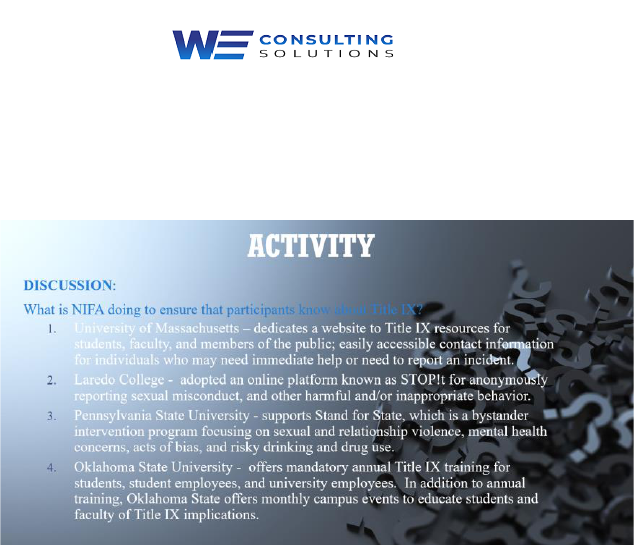
Parcipant Guide Compliance Training
www.WEConsulngSoluons.com Empowering a Greater YOU! ©WE, LLC Consulng Soluons
16 | P a g e
Small Group Breakout Acvity
In your breakout groups you will be assigned one of the following iniaves to
discuss answering the following queson:
What is NIFA doing to ensure that parcipants know about Title IX?
1. University of Massachuses – dedicates a website to Title IX resources for students,
faculty, and members of the public; easily accessible contact informaon for individuals
who may need immediate help or need to report an incident.
2. Laredo College - adopted an online plaorm known as STOP!t for anonymously
reporng sexual misconduct, and other harmful and/or inappropriate behavior.
3. Pennsylvania State University - supports Stand for State, which is a bystander
intervenon program focusing on sexual and relaonship violence, mental health
concerns, acts of bias, and risky drinking and drug use.
4. Oklahoma State University - oers mandatory annual Title IX training for students,
student employees, and university employees. In addion to annual training, Oklahoma
State oers monthly campus events to educate students and faculty of Title IX
implicaons.

Parcipant Guide Compliance Training
www.WEConsulngSoluons.com Empowering a Greater YOU! ©WE, LLC Consulng Soluons
17 | P a g e
The Age Discriminaon Act of 1975 (Purpose of the Act)
The Age Discriminaon in Employment Act of 1967 (ADEA) was enacted prior to the Age
Discriminaon Act of 1975. This regulaon protected all adults aged forty and above from
discriminatory acons based on their age in the workforce. The Age Discriminaon Act of
1975 did not modify or amend ADEA. It does not target older Americans like the ADEA does,
but it protects age in general by not dening an age group.
Overview: The Age Discriminaon Act of 1975
1978, Congress wanted to make sure everyone had the opportunity to parcipate and receive
services provide by organizaons and recipients of federal funds:
(1) Added a private right of acon to the Age Discriminaon Act.
(2) provided a mechanism for the disbursal to alternate recipients of funds that have
been withheld under the Age Discriminaon Act.
(3) added a requirement that the Department of Health, Educaon and Welfare (now
HHS) approve the nal regulaons of other Federal agencies.
(4) made the eecve date of regulaons implemenng the Act no earlier than July 1,
1979.
(5) required annual reports to the Congress on progress in implemenng the Act; and
(6) removed the word "unreasonable" from the Act's statement of purpose.
Age Discriminaon Excepons
If the acon reasonably takes into account age as a factor necessary to the normal operaon or
the achievement of any statutory objecve of a program or acvity.
a) Age is used as a measure or approximaon of one or more other characteriscs; and
b) The other characterisc(s) must be measured or approximated in order for the normal
operaon of the program or acvity to connue, or to achieve any statutory objecve of the
program or acvity; and
c) The other characterisc(s) can be reasonably measured or approximated by the use of age; and
d) The other characterisc(s) are impraccal to measure directly on an individual basis.
e) 45 CFR 91.13(c)
Normal operaon means the operaon of a program or acvity without signicant changes
that would impair its ability to meet its objecves.
Statutory objecve means any purpose of a program or acvity expressly stated in any Federal
statute, State statute, or local statute or ordinance adopted by an elected, general purpose
legislave body.

Parcipant Guide Compliance Training
www.WEConsulngSoluons.com Empowering a Greater YOU! ©WE, LLC Consulng Soluons
18 | P a g e
The Americans with Disabilies Act of 1990 (ADA)
The purpose of the law is to make sure that people with disabilies have the same rights and opportunies as
everyone else. The ADA is divided into ve Titles (or Secons) that relate to dierent areas of public life.
The ADA broadened the agencies and businesses that must comply with the non-discriminaon and
accessibility provisions of the law.
NOTE: Secon 504 and the ADA does not ensure that a child with a disability will receive an individualized
educaonal program.
The Five Secons of the ADA
o Title I – Employment (regulated by the EEOC)
1) Helps people with disabilies access the same employment opportunies and benets available to
people without disabilies.
2) Applies to employers with 15 or more employees.
3) Requires employers to provide reasonable accommodaons to qualied applicants or employees. A
“reasonable accommodaon” is a change that accommodates employees with disabilies so they
can do the job without causing the employer “undue hardship” (too much diculty or expense).
4) Denes disability, establishes guidelines for the reasonable accommodaon process, and addresses
medical examinaons and inquiries.
o Title II - Public Services: State and Local Government (regulated by the DOJ)
1) Prohibits discriminaon on the basis of disability by “public enes” such as state and local
government agencies. .
2) Requires public enes to make their programs, services and acvies accessible to individuals with
disabilies.
3) Outlines requirements for self-evaluaon and planning; making reasonable modicaons to
policies, pracces, and procedures where necessary to avoid discriminaon; idenfying
architectural barriers; and communicang eecvely with people with hearing, vision and speech
disabilies.
o Title III - Public Accommodaons and Services Operated by Private Enes (regulated by the DOJ)
1) Prohibits places of public accommodaon from discriminang against individuals with disabilies.
Public accommodaons include privately owned, leased or operated facilies like hotels,
restaurants, retail merchants, doctor’s oces, golf courses, private schools, day care centers, health
clubs, sports stadiums, movie theaters, and so on.
2) Sets the minimum standards for accessibility for alteraons and new construcon of commercial
facilies and privately owned public accommodaons. It also requires public accommodaons to
remove barriers in exisng buildings where it is easy to do so without much diculty or expense.
3) Directs businesses to make "reasonable modicaons" to their usual ways of doing things when
serving people with disabilies.
4) Requires that businesses take steps necessary to communicate eecvely with customers with
vision, hearing, and speech disabilies.

Parcipant Guide Compliance Training
www.WEConsulngSoluons.com Empowering a Greater YOU! ©WE, LLC Consulng Soluons
19 | P a g e
o Title IV – Telecommunicaons (regulated by the FCC)
1) Requires telephone and Internet companies to provide a naonwide system of interstate and
intrastate telecommunicaons relay services that allows individuals with hearing or speech
disabilies to communicate over the telephone.
2) Requires closed caponing of federally funded public service announcements.
o Title V - Miscellaneous Provisions
1) Contains a variety of provisions relang to the ADA as a whole, including its relaonship to other
laws, state immunity, its impact on insurance providers and benets, prohibion against retaliaon
and coercion, illegal use of drugs, and aorney’s fees.
2) Provides a list of certain condions that are not considered disabilies.

Parcipant Guide Compliance Training
www.WEConsulngSoluons.com Empowering a Greater YOU! ©WE, LLC Consulng Soluons
20 | P a g e
How the Regulaons Intersect
1. All are civil rights for all people.
2. All have compliance standards to prevent
discriminaon.
a. Direct
b. Indirect
c. Disparate Treatment
3. The covered disabilies and impairments are
claried within each regulaon.
4. Recipients of Federal nancial assistance must
volunteer to be compliant.
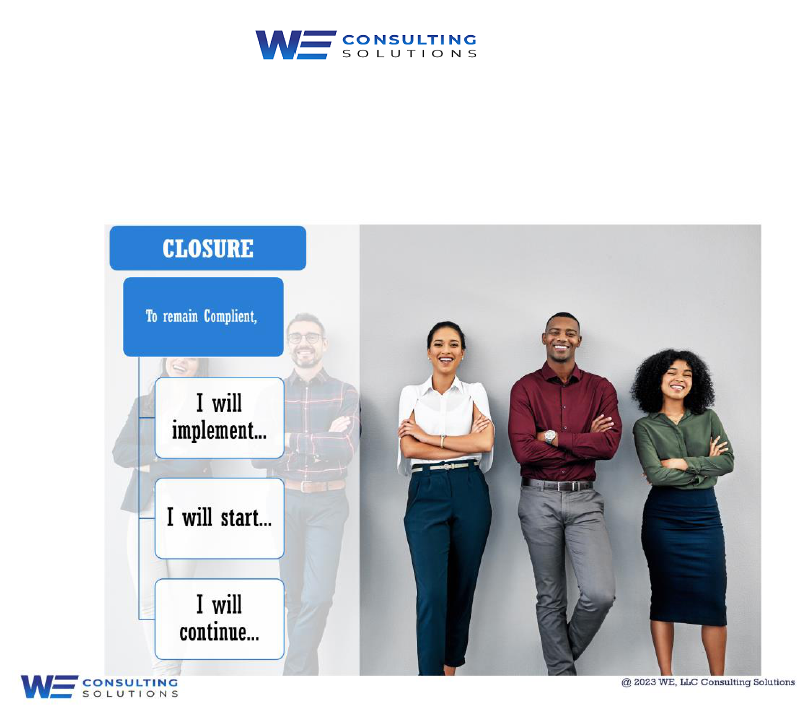
Parcipant Guide Compliance Training
www.WEConsulngSoluons.com Empowering a Greater YOU! ©WE, LLC Consulng Soluons
21 | P a g e
Intentional Acts
I will Implement……
I will Start…..
I will Continue………….
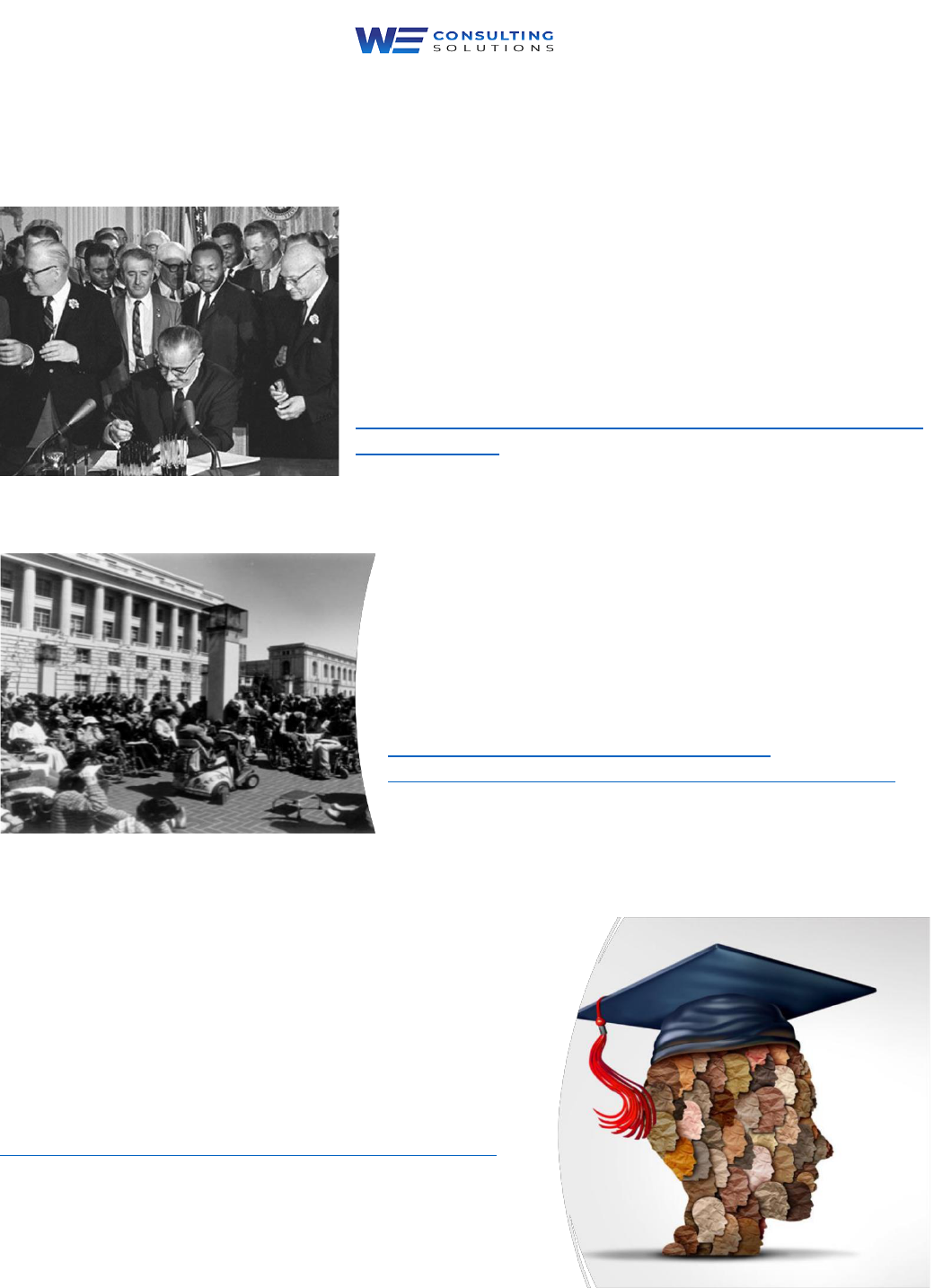
Parcipant Guide Compliance Training
www.WEConsulngSoluons.com Empowering a Greater YOU! ©WE, LLC Consulng Soluons
22 | P a g e
Appendix A
Title VI of the Civil Rights Act of 1964
No person in the United States shall, on the ground of race, color, or naonal
origin, be excluded from parcipaon in, be denied the benets of, or be
subjected to discriminaon under any program or acvity receiving Federal
nancial assistance.
hps://www.dol.gov/agencies/oasam/regulatory/statutes/tle-vi-civil-
rights-act-of-1964
Secon 504 of the Rehabilitaon Act of 1973
No otherwise qualied handicapped individual shall, solely by reason of
his/her handicap, be excluded from the parcipaon in, be denied the
benets of, or be subject to discriminaon under any program or
acvity receiving federal nancial assistance .
Title IX of the Educaon Amendments of 1972
No person in the United States shall, on the basis of sex, be
excluded from parcipaon in, be denied the benets of, or be
subjected to discriminaon under any educaon program or
acvity receiving Federal nancial assistance.
hps://www2.ed.gov/about/oces/list/ocr/docs/x_dis.html
hps://www.gpo.gov/fdsys/pkg/USCODE-2010-
tle29/pdf/USCODE-2010-tle29-chap16-subchapV-sec794.pdf

Parcipant Guide Compliance Training
www.WEConsulngSoluons.com Empowering a Greater YOU! ©WE, LLC Consulng Soluons
23 | P a g e
The Age Discriminaon Act of 1975
Prohibits discriminaon on the basis of age in
programs and acvies receiving Federal nancial
assistance.
The Americans with Disabilies Act
Prohibits discriminaon against people with disabilies
in several areas, including employment, transportaon,
public accommodaons, communicaons and access to
state and local government’ programs and services. As
it relates to employment, Title I of the ADA protects the
rights of both employees and job seekers. The ADA also
establishes requirements for telecommunicaons relay
services. Title IV, which is regulated by the Federal
Communicaons Commission (FCC), also requires
closed caponing of federally funded public service
announcements.
hps://www.dol.gov/general/topic/disability/ada
hps://www.federalregister.gov/documents
/2017/10/11/2017-
21905/nondiscriminaon-on-the-basis-of-
age-in-programs-and-acvies-receiving-
federal-nancial

Appendix 4. Hyperlinks for Publicly Available Policies, Procedures, and
Resources Related to Preventing and Responding to Sex-Based and Sexual
Harassment Included in Inventory
Department of Energy (DOE):
1. DOE Policies Prohibiting Discrimination & Harassment (n.d.) –
https://science.osti.gov/SW-DEI/DOE-
Diversity-Equity-and-Inclusion-Policies/DOE-Policies-Prohibiting-Discrimination-and-
Harassment#financial_assistance
2. Frequently Asked Questions (FAQs): External Civil Rights Compliance (2022) –
https://www.energy.gov/sites/default/files/2022-09/DOE%20OCR-
EEO%20External%20Civil%20Rights%20FAQs.for%20distribution.pdf
3. Guidance and Technical Assistance for Recipients of and Applicants for DOE Financial Assistance (n.d.) –
https://www.energy.gov/justice/guidance-and-technical-assistance-recipients-and-applicants-doe-
financial-assistance
4. Conference Proposals (2023) – https://science.osti.gov/grants/Applicant-and-Awardee-
Resources/Conference-Proposals
5. SC Statement of Commitment (2022) – https://science.osti.gov/SW-DEI/SC-Statement-of-Commitment
6. Potential Consequences of Inappropriate Behavior at SC-Hosted Events (n.d.) –
https://science.osti.gov/SW-DEI/SC-Statement-of-Commitment/Potential-Consequences
Department of Interior (DOI):
1. Personnel Bulletin 18-01 (2018) –
https://www.doi.gov/employees/anti-harassment/personnel-bulletin-
18-01
Department of Transportation (DOT):
2. External Civil Rights Complaint Processing Manual (2007) –
https://www.transportation.gov/sites/dot.gov/files/docs/externalcomplaintmanual-final_1.pdf
Environmental Protection Agency (EPA):
1. Procedure for Addressing Allegations of Workplace Harassment (2015) –
https://www.epa.gov/sites/default/files/2016-
01/documents/epa_order_4711_workplace_harassment_final.pdf
2. Message to EPA Employees: The U.S. Environmental Protection Agency’s Anti-Harassment Policy
Statement (2023) –
https://www.epa.gov/system/files/documents/2023-09/23-03061-AO-
OCR%20_Signed%20Anti-Harassment%20Policy.pdf
National Aeronautics and Space Administration (NASA):
1. Reporting Requirements Regarding Findings of Harassment, Sexual Harassment, Other Forms of
Harassment, or Sexual Assault (85 Fed. Reg. 47, March 10, 2020) –
https://www.govinfo.gov/content/pkg/FR-2020-03-10/pdf/2020-04815.pdf
2. Harassment and Discrimination Reporting for NASA Employees, Contractors, and Grantee Beneficiaries
(n.d.) – https://missionstem.nasa.gov/filing-a-complaint.html
National Institutes of Health (NIH)
1. Definitions (2021) – https://grants.nih.gov/grants/policy/harassment/definitions.htm

2. 8.1.2 Prior Approval Requirements (2022) –
https://grants.nih.gov/grants/policy/nihgps/HTML5/section_8/8.1.2_prior_approval_requirements.htm
?Highlight=harassment
3. 14.6 Public Policy Requirements and Objectives (2022) –
https://grants.nih.gov/grants/policy/nihgps/HTML5/section_14/14.6_public_policy_requirements_and
_objectives.htm?Highlight=harassment
4. NIH Process for Handling Allegations of Harassment on an NIH-Funded Project at a Recipient Institution
(2023) – https://grants.nih.gov/grants/policy/harassment/actions-oversight/allegation-process.htm
5. Institutional Reporting (2022) – https://grants.nih.gov/grants/policy/harassment/institutional-
reporting.htm
6. Expectations, Policies, and Requirements (2022) –
https://grants.nih.gov/grants/policy/harassment/policy-requirement.htm
7. 8.3 Management Systems and Procedures (2023) –
https://grants.nih.gov/grants/policy/nihgps/HTML5/section_8/8.3_management_systems_and_proced
ures.htm
8. Find Help (2019) – https://grants.nih.gov/grants/policy/harassment/find-help.htm
9. What to Expect When Notifying NIH (n.d.) – https://grants.nih.gov/grants/policy/harassment/notify.htm
10. Addressing Sexual Harassment in Biomedical Science (2020) –
https://www.youtube.com/watch?v=7Px7G6rYVC8
11. Changing the culture of science to end sexual harassment (2018) – https://www.nih.gov/about-
nih/who-we-are/nih-director/statements/changing-culture-science-end-sexual-harassment
12. Congress strengthens NIH’s ability to address harassment in NIH-funded activities (2022) -
https://www.nih.gov/about-nih/who-we-are/nih-director/statements/congress-strengthens-nih-s-
ability-address-harassment-nih-funded-activities
13. Frequently Asked Questions (FAQs) (n.d.) – https://grants.nih.gov/faqs#/anti-sexual-harassment.htm
14. Updated Requirements for NIH Notification of Removal or Disciplinary Action Involving Program
Directors/Principal Investigators or other Senior/Key Personnel (2022) –
https://grants.nih.gov/grants/guide/notice-files/NOT-OD-22-129.html
15. Plans to Promote Safe Environments at Conferences Supported by NIH Grants and Cooperative
Agreements (2022) – https://grants.nih.gov/grants/guide/notice-files/NOT-OD-22-074.html
16. NIH Actions and Oversight (2022) – https://grants.nih.gov/grants/policy/harassment/actions-
oversight.htm
17. Guidance Regarding Change in Status, Including Absence of PD/PI and Other Key Personnel Named in
the Notice of Award (2020) – https://grants.nih.gov/grants/guide/notice-files/NOT-OD-20-124.html
18. Data – Harassment and Discrimination Concerns (2023) –
https://grants.nih.gov/grants/policy/harassment/data
19. Workplace Climate and Harassment Survey (WCHS) (2019) – https://diversity.nih.gov/general-
page/workplace-climate-and-harassment-survey
20. Ensuring Safe and Respectful Workplaces Podcast (2023) – https://nexus.od.nih.gov/all/2023/12/21/nih-
all-about-grants-podcast-ensuring-safe-and-respectful-workplaces/
21. Supporting a Safe and Respectful Workplace at Institutions that Receive NIH Funding (2021) –
https://grants.nih.gov/grants/policy/harassment.htm
National Oceanic and Atmospheric Administration (NOAA):
1. NOAA Sexual Assault and Sexual Harassment Prevention and Response Policy (2018) –
https://www.noaa.gov/organization/administration/nao-202-1106-noaa-sexual-assault-and-sexual-
harassment-prevention-and

Nuclear Regulatory Commission (NRC):
1. How to File a Complaint of Discrimination by a Recipient of NRC Financial Assistance (2023) –
https://www.nrc.gov/about-nrc/civil-rights/programs/outreach-coord-comp-program/how-to-file-
complaint-discrimination-recipient-nrc-financial-assistance.html
2. External Civil Rights Program (2023) – https://www.nrc.gov/about-nrc/civil-rights/programs/outreach-
coord-comp-program.html
3. Nondiscrimination in Federally Funded Activities (2023) – https://www.nrc.gov/about-nrc/civil-
rights/programs/outreach-coord-comp-program/compliance-pgrm.html
4. Pre- and Post-Award Compliance Programs (2023) – https://www.nrc.gov/about-nrc/civil-
rights/programs/outreach-coord-comp-program/award-compliance.html#pre-award
5. NRC Standard Form 781 (2022) – https://www.nrc.gov/docs/ML1308/ML13083A329.pdf
6. 6. Information on Civil Rights Compliance Requirements Imposed as a Condition of Award of NRC
Federal Financial Assistance (n.d.) –
https://www.nrc.gov/about-nrc/civil-rights/civil-rights-compliance-
requirements-sec6.pdf
National Science Foundation (NSF):
1. Stopping Harassment and Assault (n.d.) – https://new.nsf.gov/stopping-harassment
2. Polar Code of Conduct (2023) – https://www.nsf.gov/geo/opp/documents/policy/polar_coc.pdf
3. NSF Proposal & Award Policies & Procedures Guide Chapter XI: Other Post Award Requirements and
Considerations (Part A) Non-Discrimination Statutes and Regulations (2023) –
https://new.nsf.gov/policies/pappg/23-1/ch-11-other-post-award-requirements#11A1
4. NSF Proposal & Award Policies & Procedures Guide Chapter II: Proposal Preparation Instructions
(Section E9) Safe and Inclusive Working Environments for Off-Campus or Off-Site Research (2023) –
https://new.nsf.gov/policies/pappg/23-1/ch-2-proposal-preparation#2E9
5. TH15I – Making Remote Fieldwork Environments More Welcoming, Safe, and Equitable: Progress and
Needs for Action (2023) – https://agu.confex.com/agu/fm23/meetingapp.cgi/Session/198209
6. ED51A - Successes and Challenges in Advancing Diversity, Equity, Inclusion, and Accessibility in the
Polar and Alpine Sciences I Oral (2023) –
https://agu.confex.com/agu/fm23/meetingapp.cgi/Session/199749
7. NSF Sexual Assault/Harassment Prevention and Response (SAHPR) (2022) –
https://www.nsf.gov/geo/opp/documents/USAP%20SAHPR%20Report.pdf
8. National Study Supported by NSF: Sexual Harassment of Women: Climate, Culture and Consequences
in Academic Sciences, Engineering and Medicine (2018) –
https://nap.nationalacademies.org/catalog/24994/sexual-harassment-of-women-climate-culture-and-
consequences-in-academic
Smithsonian Institution (SI):
1. Anti-Harassment Policy (2020) –
https://www.si.edu/sites/default/files/unit/ohr/sd_225_anti-
harassment_policy_12-30-2020.pdf
2. SI Civil Program (2023) – https://www.si.edu/sicivil
Department of State (State):
1. Standard Terms and Conditions for Federal Awards (2020) –
https://www.state.gov/wp-
content/uploads/2022/05/U.S.-Department-of-State-Standard-Terms-and-Conditions-10-21-
20_REV.pdf
United States Department of Agriculture (USDA):
1. Anti-Harassment Policy Statement (2021) – https://grants.nih.gov/grants/policy/harassment/data

2. Nondiscrimination in Programs and Activities Receiving Federal Financial Assistance from USDA (2021) –
https://www.usda.gov/directives/dr-4330-002
3. How to File a Program Discrimination Complaint (2023) – https://www.usda.gov/oascr/how-to-file-a-
program-discrimination-complaint
4. Establishing an Anti-Harassment Program (2023) – https://www.usda.gov/directives/dr-4200-003
5. Non-Discrimination Statement (n.d.) – https://www.usda.gov/directives/dr-4200-003
U.S. Geological Survey (USGS):
1. 370.734.1 - Anti-Harassment Policy and Implementing Procedures (2020) –
https://www.usgs.gov/survey-manual/3707341-anti-harassment-policy-and-implementing-procedures
